*This post may contain affiliate links. Read more »
After having some of the best Chee Cheong Fun in Hong Kong, I knew I needed to master this dim sum classic. And boyyyy have I tried making it a zillion different ways, until I fine tuned it into the masterpiece in front of you. Are you a beginner cook? This chee cheong fun recipe probably isn't a great place for you to start. If you a re comfortable in the kitchen though, you are about to knock this out of the park!


Enter your email & I'll send it to your inbox. Plus, get great new recipes from me every week!
By submitting this form, you consent to receive emails from Cinnamon Snail.
I make these alongside my texturally contrasting wonton rice dumplings with red jujube dates to make a quick dim sum meal.
Get your steamer ready, because this is going to be (Chee Cheong) fun!
Jump to:
- 🥰Why you'll adore this chee cheong fun recipe
- 🥟Some things you might actually hate about this chee cheong fun recipe (just being honest here).
- 🧅Ingredients for chee cheong fun
- 🥃A wee lil’ note about the sweetened soy sauce for topping Chee Cheong Fun
- 📖 How to make Chee Cheong Fun
- 💡Serving Ideas
- ❗️Top tips
- 🤷♀️Recipe FAQs
- ✌️I love serving theses with this chee cheong fun recipe:
- Chee Cheong Fun (Steamed Rice Noodle Dim Sum Rolls)
🥰Why you'll adore this chee cheong fun recipe
👉Irresistibly Silky Texture: This recipe knocks Chee Cheong Fun's hallmark texture out of the friggin park!
✊Versatile AF: Chee Cheong Fun is like a blank canvas waiting to be adorned with delicious fillings. From succulent BBQ seitan (try it with my vegan chicken recipe marinated in a Korean bbq marinade) to tofu grilled in tom yum sauce, or crispy fried glutenous dough, you can customize it to your heart's content.
👉Dim Sum Deeeeeelight: This Hong Kong style chee cheong fun is an essential dish to learn if you're a fan of dim sum! Enjoyed as a breakfast staple or a tasty snack, it's a dish that will transport you to the bustling streets of Hong Kong (where I first fell in love with it) or the vibrant tea houses of Guangzhou. Want to learn how to make a complete vegan dim sum? I gotcha with this fun dim sum class!


🤘learn to make insanely flavorful vegan sides
This guide to my most popular vegan side dishes is 100% FREE, & you'll love the actual heck out of it 🥰
🥟Some things you might actually hate about this chee cheong fun recipe (just being honest here).
Making chee cheong fun is a little bit on the advanced side of cooking. There are a couple of small details that can make or break the outcome of this recipe, so I really want to stress how important they are:
❗️I highly recommend making this in an actual bamboo steamer. The porous woven material of the steamer allows for some moisture to escape, and the structure of the lid prevents water droplets from accumulating and dripping onto the noodles. A workaround is to place a dry kitchen towel over the steamer below the lid to allow a little steam to escape, and to prevent dripping.
❗️Finding pans that will fit into your steamer that have high enough of sides so that water doesn't seep in is important and can be a challenge depending on the size of your steamer. I recommend using a square or rectangular pan that has at least one-inch tall sides.
🧅Ingredients for chee cheong fun
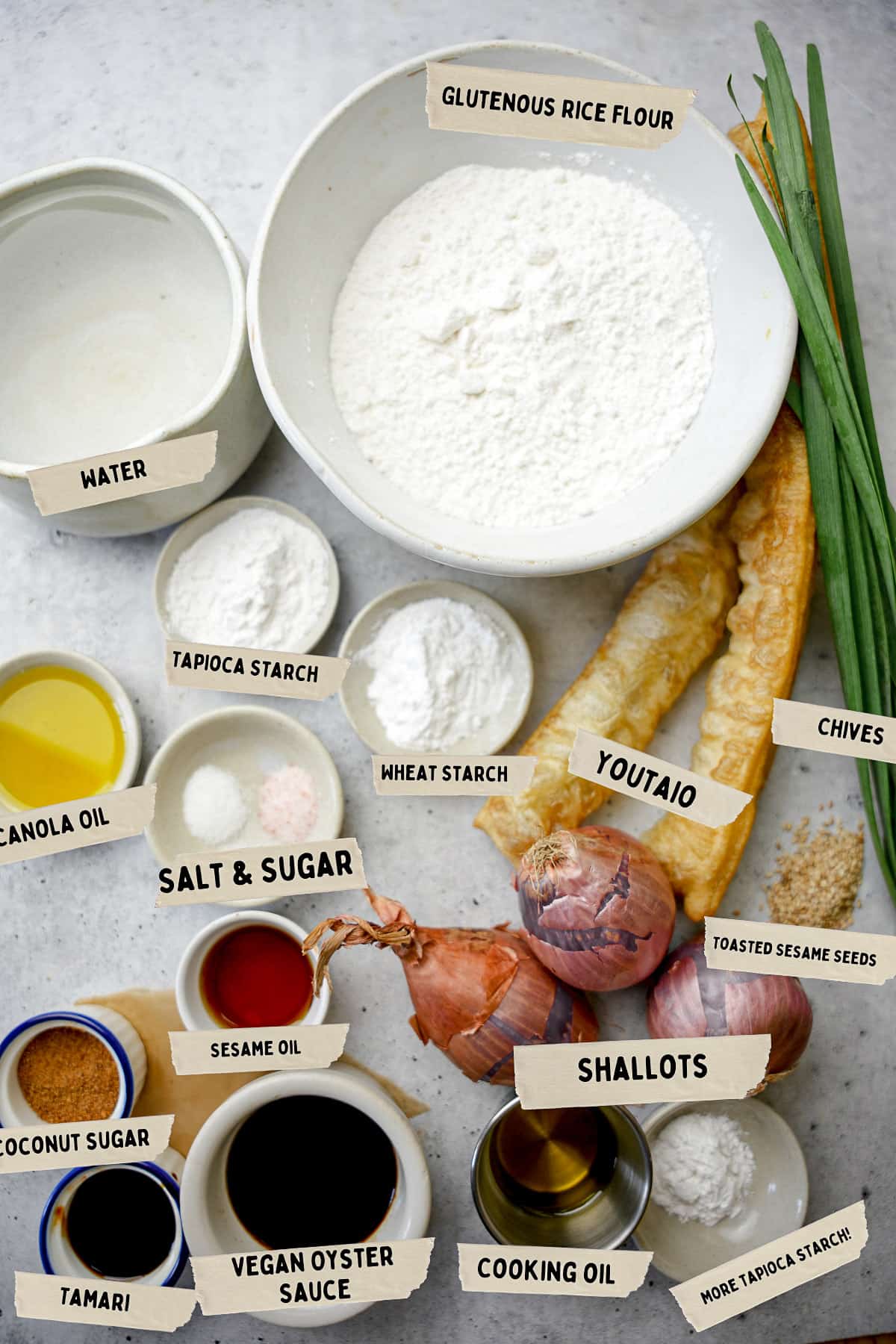
Tapioca starch
Tapioca starch, derived from the cassava root, is a common ingredient used in many Asian recipes for its ability to create a chewy and translucent texture. That's also why I love using it to make jellies for bubur cha cha. Anyway, in Chee Cheong Fun, tapioca starch is often used in the batter to help achieve the desired elasticity and smoothness in the rice noodle rolls. If you don't have tapioca starch on hand, you can substitute cornstarch, arrowroot, or potato starch as alternatives.
White rice flour
Rice flour is a crucial ingredient in Chee Cheong Fun, as it forms the base of the delicate rice noodle rolls. It provides the structure and flexibility needed to achieve the signature silky texture, which is why it is also used in bubur sum sum. It's important to use the right kind of rice flour for the best results. Fine white rice flour, or glutinous rice flour, works best for making Chee Cheong Fun. Avoid using brown rice flour or other coarse rice flours, as they have a higher fiber content, which can result in a grainy and less desirable texture in the final dish.
Youtiao
The name in Cantonese yàuhjagwái, which literally translates to “oil-fried devil”, is even better. This crispy-on-the-outside and fluffy-on-the-inside fried dough, which I also use in my mee rebus recipe, makes a delightful filling for Chee Cheong Fun, adding a satisfying crunch and flavor contrast to the soft rice noodle rolls. You can find pre-made Youtiao in Asian grocery stores, especially those that carry Chinese or Malaysian ingredients. They are often sold in packs labeled as “Chinese Crullers” and can be easily sliced into smaller pieces to use as a filling in Chee Cheong Fun. If youtiao is not available near you, you can also just fill the steamed noodles with scallions and chilies, or maybe even thin strips of my vegan bulgogi!
Wheat starch
Wheat starch, also known as wheat flour starch, is a fine white powder extracted from wheat flour. You can get it at Asian food stores and online. It is commonly used as a thickening agent to create a smooth, glossy texture in Chinese and other Asian cuisines. If you are gluten-free, you can replace the wheat starch in this recipe with an equal amount of tapioca or potato starch.
See the recipe card at the bottom of this page for the complete list of ingredients and their quantities.
🥃A wee lil’ note about the sweetened soy sauce for topping Chee Cheong Fun
I am all about using kecap manis, sweet, lightly seasoned soy sauce for this. By cooking the sweet soy sauce mixture, the sugars caramelize and the sauce becomes thicker and more syrupy.
But for the chee cheong fun recipe, there is no need to cook the sauce for long enough for it to thicken. Having it be liquidy and loose lets it really get into the folds of the steamed noodle rolls, and that’s what you want! You will just warm the ingredients for it a little so as not too cool down the chee cheong fun.
As an alternative, you can forgo the sweetened soy sauce, and top these babies with chili garlic sauce, nuoc cham, nam prik pao, or even homemade sriracha.
📖 How to make Chee Cheong Fun
You wanna see how to ascend to dim sum heaven? Well, here we go with a lil’ step by step guide! Or you can follow along with the easy-to-print recipe card towards the bottom of this page.

Step 1
Prepare the Batter: Whisk together white rice flour, wheat starch, tapioca starch, salt, sugar, canola, or vegetable oil, and water in a bowl. Let it rest for 15-20 minutes.
Step 2
Make Sweetened Soy Sauce: Combine tamari, coconut sugar, sesame oil, and vegan oyster sauce in a small saucepan. Warm over low heat for a couple of minutes to dissolve the sugar, then set aside.
Step 3
Thinly slice the shallots and toss them with tapioca starch in a bowl.
Step 4
Sauté the coated shallots until crispy.
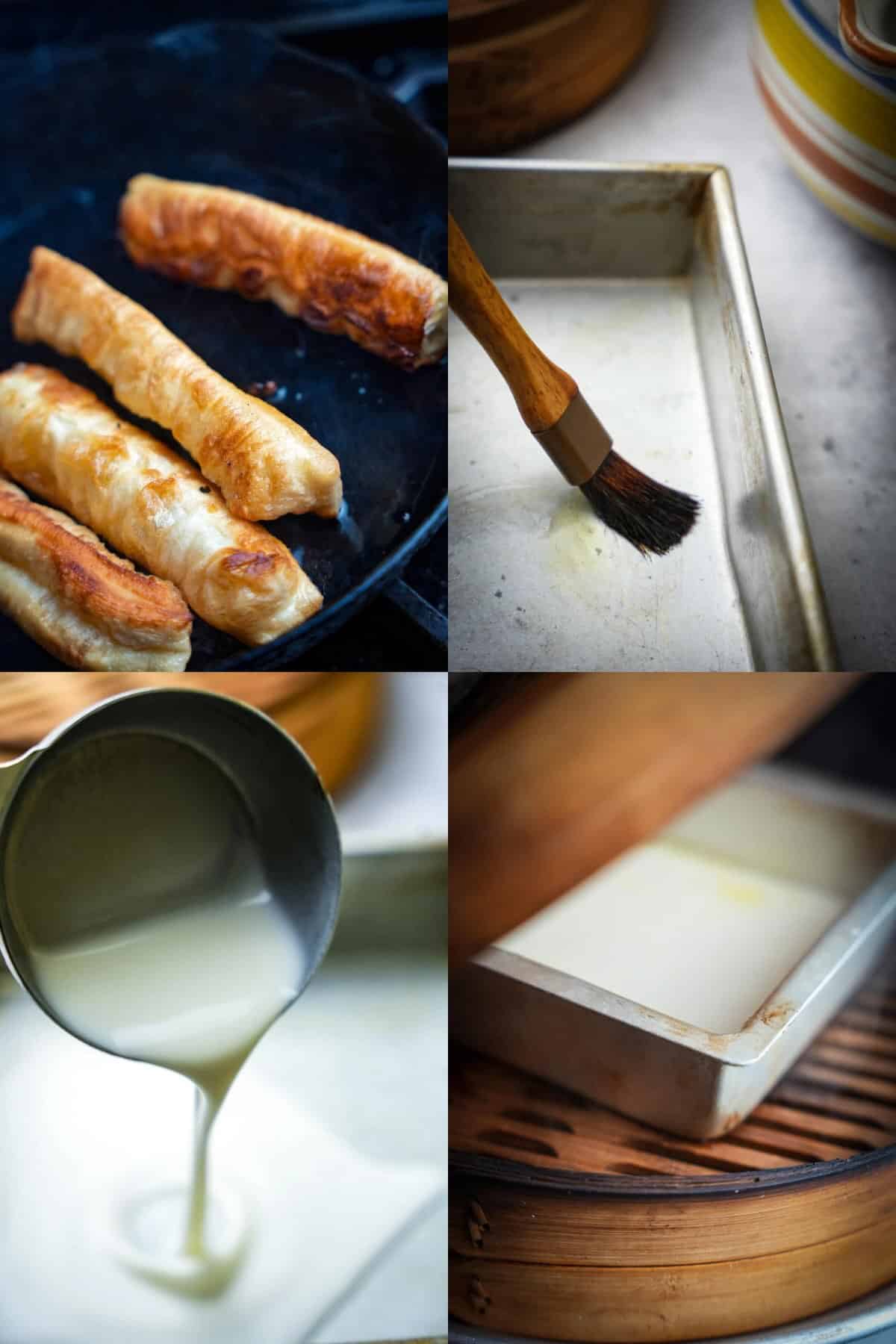
Step 5
In the same pan, briefly pan-fry Youtiao until crispy.
Step 6
Set up a steamer over medium heat. If you have multiple tiers, you can make a bunch of this dish all in one go.
Lightly grease a nonstick pan that fits into your steamer. I recommend using a square pan, as it will be easiest to peel the steamed noodle out of, and will more easily make even-sized portions than using a round pan.
Step 7
Stir the rested batter and pour a 2-3 mm. deep thin layer onto the prepared pan.
Step 8
Steam for 3-4 minutes until translucent and pliable. You can check for doneness by poking the surface with the end of a chopstick. The steamed noodle sheet should be pliable and flexible. It should be evenly cooked throughout, with no opaque or doughy spots.

Step 9
Carefully remove the steamed noodle sheet from the pan using a dough scraper. If the noodle breaks a little, it’s ok, you should still be able to roll and use it.
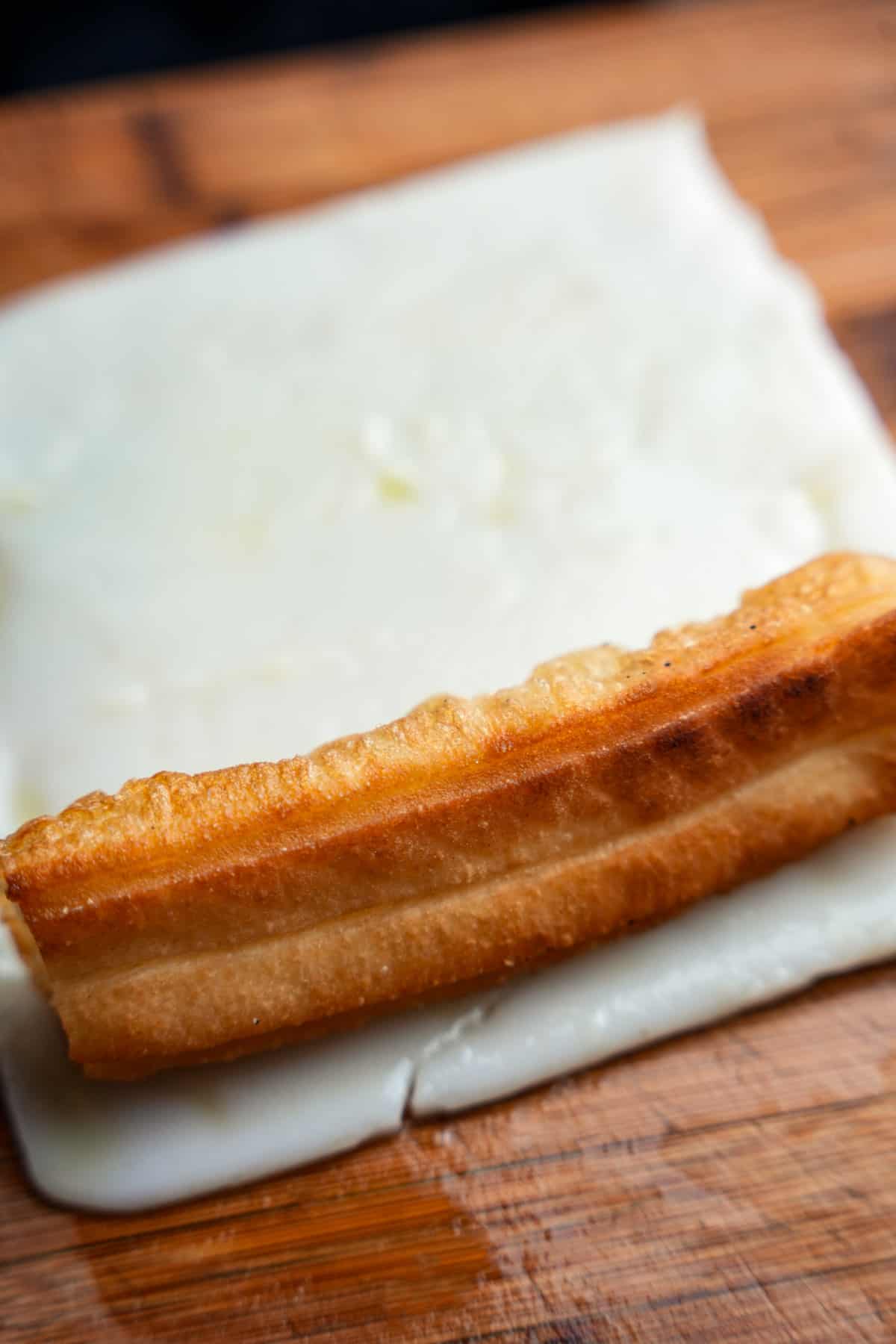
Step 10
Place a Youtiao stick on the edge of the steamed batter and roll it up tightly. Cut off any excess fried dough stick that is sticking out of the other side of the sheet. Repeat with the remaining batter and Youtiao sticks. Cut the rolls into 2-3 inch wide pieces.

Serve: Drizzle with sweetened soy sauce and top with crispy shallots and minced chives or sliced scallions.
💡Serving Ideas
Oh lordy, the number of dishes that go as a lovely partner to Chee Cheong Fun are in-freaking-neumerable. Definitely consider serving these along with miso glazed eggplant, mee rebus, Burmese curry noodles, or alongside my kimchi fried rice with spicy Korean cucumbers. These could even make a great accompaniment to a warm bowl of sayur lodeh topped with lontong. I almost always serve a meal like this balanced with some steamed or sautéed bok choy, or broccoli with garlic sauce.
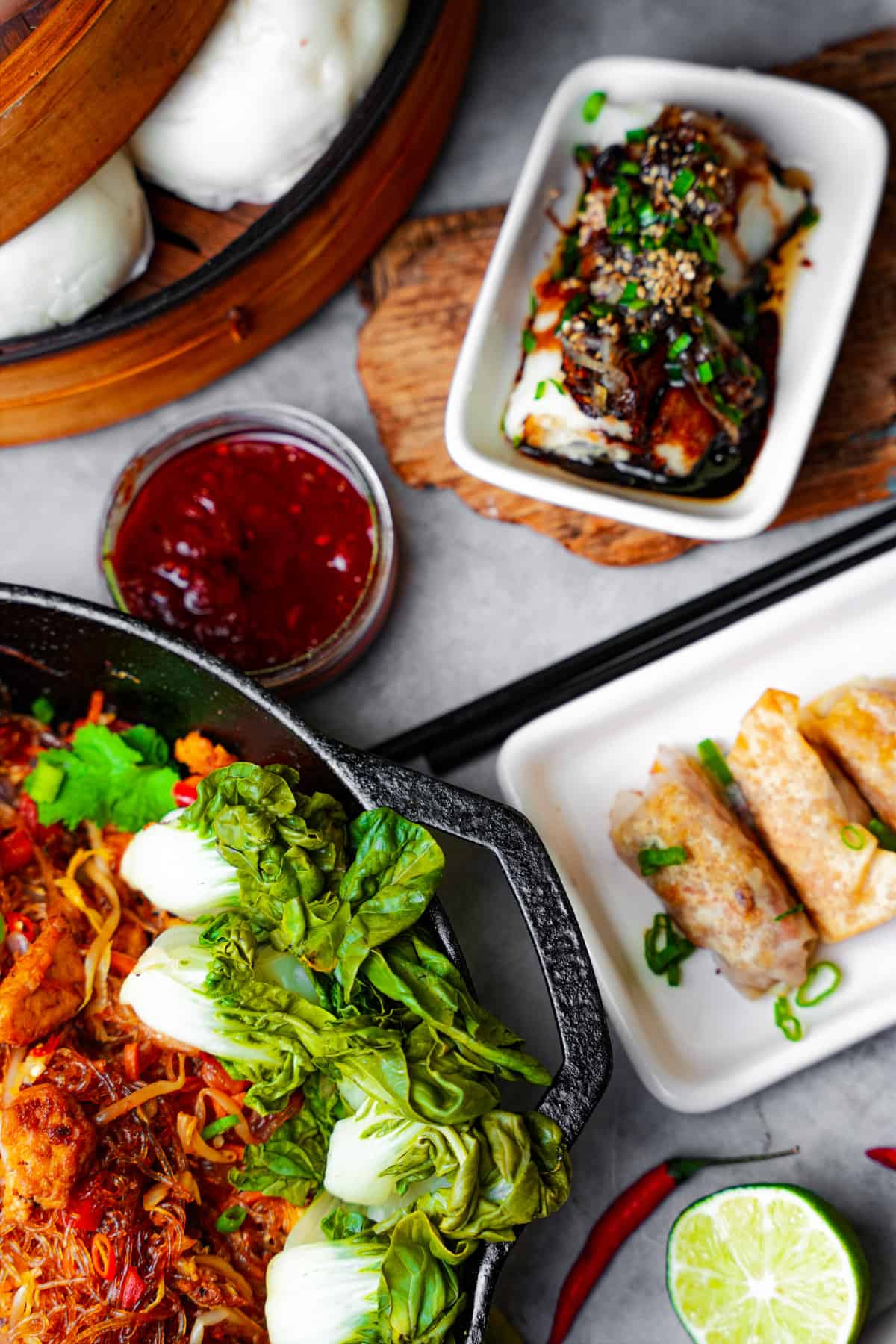
❗️Top tips
The right steamer set up makes a big difference.
Steaming rice noodles can be greatly impacted by the steamer itself. I can not understate this fact! I use a bamboo steamer, and the fact that the lid is made from porous woven wood prevents droplets of steam from dripping down onto the noodles and making them mushy, soggy, and irregularly cooked.
Having a solid glass or metal lid isn't a deal breaker though. Just put a kitchen towel across the top of the steamer underneath the lid to absorb some of the moisture, and prevent drops from raining down on the noodles.
Steam chee cheong fun noodles for the right amount of time.
Steaming the rice noodles for too long of an amount of time can result in overly soft and delicate rice noodle rolls that may tear or become mushy. Steaming Chee Cheong Fun for too long can also cause the noodle sheet to become too sticky, making it difficult to handle and roll.
It's important to keep a close eye on the steaming process and avoid over-steaming. The exact steaming time may vary depending on the thickness of the rice noodle rolls and the type of steamer you're using. Generally, Chee Cheong Fun is steamed for about 3-5 minutes until the noodle sheet is cooked and becomes translucent.
To prevent over-cooking, you can periodically check the doneness of the steamed rice noodle sheet by gently touching it with a chopstick or a fork. It should feel firm but pliable, and not too sticky or mushy. If you notice that the noodle sheet is becoming too soft or sticky, reduce the steaming time or adjust the heat accordingly to avoid overcooking.
Rolling technique matters.
Rolling the Chee Cheong Fun can be a bit tricky, especially for beginners. Use a rubber spatula or a thin bamboo steamer sheet to gently lift and roll the cooked rice noodle sheet while it's still warm and pliable. Avoid overfilling the rice noodle rolls, as it can cause them to tear or burst. Practice your rolling technique to achieve smooth and tightly rolled rice noodle rolls.
🤷♀️Recipe FAQs
Chee Cheong Fun has a long history that can be traced back to southern China, particularly in the Guangdong and Fujian provinces. It is believed to have originated during the Tang Dynasty (618-907 AD) and has been enjoyed as a popular street food in China for centuries.
The name Chee Cheong Fun is derived from the Cantonese language, with Chee Cheong meaning pig intestine, and Fun meaning noodles. However, despite its name, Chee Cheong Fun does not contain any pig intestine in its ingredients or preparation. The Cantonese name is actually a reference to the appearance of the dish rather than its ingredients. The wide rice noodles, when freshly made and still warm, have a smooth and translucent texture that resembles the appearance of pig intestines.
Originally, Chee Cheong Fun was made by rolling rice noodle batter onto a cloth-lined tray and steaming it to create a thin, translucent rice noodle sheet. The rice noodle sheet would then be filled with various ingredients such as Youtiao (fried dough), shrimp, char siu (barbecued pork), or vegetables, and rolled up to form a smooth and soft rice noodle roll. It was often served with a light soy sauce-based dipping sauce and eaten as a breakfast or snack food.
Chee Cheong Fun is a popular dish in Malaysia as well, but it may have some regional variations. In Kuala Lumpur, the capital city of Malaysia, Chee Cheong Fun is typically served with a different type of sauce that includes ingredients like shrimp paste, hoisin sauce, and peanut sauce, giving it a unique flavor profile compared to the Cantonese style Chee Cheong Fun commonly found in dim sum restaurants. Additionally, the fillings and toppings used in Malaysian Chee Cheong Fun may also differ, with options like prawns, minced pork, or shredded chicken being common additions.
The style of this recipe is based more on the way I have had the dish prepared in Hong Kong on my many delicious visits there, and it happens to be completely plant-based.
Chee Cheong Fun is best eaten right after it is made. However, it is something you can get away with storing and reheating. Here’s how:
🥶Refrigerating
After making Chee Cheong Fun, let it cool to room temperature. Store the sauce in a separate container in the refrigerator, rather than pouring it on top. Then, you can store it in an airtight container or wrap it tightly with plastic wrap. It's best to store them individually to prevent them from sticking together. You can store Chee Cheong Fun in the refrigerator for up to 2-3 days.
🔥Reheating
🧖♀️Steaming: Place the Chee Cheong Fun in a heatproof plate or dish, and steam it over high heat for 5-7 minutes until heated through. Be careful not to over-steam, as it can make the noodles too soft.
☢️Microwave: Place the Chee Cheong Fun on a microwave-safe plate, and cover it loosely with a microwave-safe lid or plastic wrap. Microwave on high for 1-2 minutes, checking periodically to ensure it's heated evenly.
🔥Pan-frying: Heat a pan over medium heat with a little oil. Place the Chee Cheong Fun in the pan, and pan-fry for 1-2 minutes on each side until heated through and slightly crispy on the outside.
Note: If the Chee Cheong Fun has a filling, such as Youtiao, you may need to reheat it separately and then wrap it with the rice noodle sheet before reheating the entire dish.
Remember to handle the Chee Cheong Fun gently while reheating to prevent it from tearing or breaking apart. Once reheated, serve it hot with your favorite dipping sauce and enjoy the deliciousness of this classic dim sum dish!
If you don't want to buy wheat starch, it's pretty easy to make your own! When making washed-flour seitan, which involves rinsing wheat flour dough to remove the starch and leave behind the protein, you can save the wheat starch that's been washed off. I have a whole seitan making masterclass you can check out, where I share my method and tips for washed-flour seitan.
Allow it to settle in the rinse water for an hour or more and then carefully spoon off the water that rises to the top, saving the starch slurry at the bottom of the bowl. This wheat starch can be repurposed in recipes such as Chee Cheong Fun's batter, just remember it will have some water in it from the flour rinsing, so it behaves differently from dry wheat starch powder.
To use the wheat starch slurry from seitan making, just adjusting the water content of the batter accordingly will help you achieve the desired silky texture in your Chee Cheong Fun while making the most of the wheat starch saved from making washed-flour seitan.
Chee cheung fun is almost written phonetically. Typically, Cantonese speakers put very light emphasis on the "g" in cheung, so it often is pronounced a little more like "chee chon fun."
✌️I love serving theses with this chee cheong fun recipe:

Chee Cheong Fun (Steamed Rice Noodle Dim Sum Rolls)
Equipment
- Square pan whatever size fits in your steamer
Ingredients
Batter:
- 1 ¼ cup glutinous rice flour
- 5 teaspoons wheat starch
- 5 teaspoons tapioca starch
- ½ teaspoon salt
- ½ teaspoon sugar
- 1 tablespoon canola oil or vegetable oil
- 2 ⅔ cups water
Sweetened Soy Sauce:
- 2 tablespoons tamari or dark soy sauce
- 1 tablespoon coconut sugar or granulated sugar
- 1 tablespoon sesame oil
- 1 tablespoon vegetarian oyster sauce
To serve:
- 2 tablespoons canola or vegetable oil
- 3 medium-sized shallots thinly sliced
- 2 teaspoons tapioca starch
- 4 Youtiao Chinese fried dough sticks
- 4 teaspoons minced chives or thinly sliced scallion
- Toasted sesame seeds optional to garnish
Instructions
Mix the batter:
- In a mixing bowl, combine white rice flour, wheat starch, tapioca starch, salt, and sugar. Mix well to combine.
- Add canola or vegetable oil to the dry ingredients, followed by water. Stir until a smooth batter is formed.
- Let the batter rest for about 15-20 minutes to allow the starches to hydrate and thicken the mixture.
Make the sweetened soy sauce:
- In a small saucepan, combine tamari, coconut sugar, sesame oil, and vegan oyster sauce. Stir well to combine.
- Place the saucepan over low heat and gently warm the sauce, stirring occasionally. Once the sugar is dissolved, remove from the heat and set aside.
To form and serve:
- Heat canola or vegetable oil in a pan over medium heat. Thinly slice the shallots and toss them in tapioca starch. Add the thinly sliced shallots to the hot oil and sauté, stirring until crispy and golden brown. Remove from the pan and set aside on a paper lined plate to wick off extra oil.
- In the same pan, pan-fry the Youtiao until crispy on both sides. Remove from the pan and set aside.
- Prepare a steamer over medium heat and lightly grease a pan that fits inside of the steaming tray to prevent sticking.
- Give the rested batter a good stir with a whisk, and pour a thin layer of batter onto the steaming tray, spreading it evenly to form a thin sheet (a few millimeters deep). If you have a steamer with multiple tiers, and extra pans, make as many of these as you can at the same time. *A little hack you can use here if you are having trouble removing the steamed noodles from the pan is to line the pan with parchment paper which extends up two sides of the pan over the hight of the batter. You can use the paper to help remove the steamed noodle from the pan. Just replace it with new parchment each time so it doesn't start getting soggy if you are steaming in batches.
- Steam the batter over medium-high heat for 3-4 minutes or until it becomes translucent and pliable. Keep in mind that if you are cooking multiple trays at a time, the different tiers will take different amounts of time to cook based on their distance from the steam.
- Using a dough scraper, or rubber spatula, carefully remove the steamed batter from the steamer and place it on a clean work surface.
- Place one Youtiao stick on the edge of the steamed batter, trimming off any fried dough that sticks out of the other side. Roll up the steamed noodle sheet tightly to form a rice noodle roll. Repeat with the remaining batter and Youtiao sticks.
- Cut the rice noodle rolls into smaller pieces, about 2-3 inches in length.
- Serve the steamed rice rolls hot, drizzled with the sweetened soy sauce, and topped with crispy shallots and minced chives or thinly sliced scallions. Optionally garnish with toasted sesame seeds.
Notes
Steaming tip:
It's important to keep a close eye on the steaming process and avoid over-steaming. The exact steaming time may vary depending on the thickness of the rice noodle rolls and the type of steamer you're using. Generally, Chee Cheong Fun is steamed for about 3-5 minutes until the noodle sheet is cooked and becomes translucent. To prevent over-cooking, you can periodically check the doneness of the steamed rice noodle sheet by gently touching it with a chopstick or a fork. It should feel firm but pliable, and not too sticky or mushy. If you notice that the noodle sheet is becoming too soft or sticky, reduce the steaming time or adjust the heat accordingly to avoid overcooking.Rolling technique matters.
Rolling the Chee Cheong Fun can be a bit tricky, especially for beginners. Use a rubber spatula or a thin bamboo steamer sheet to gently lift and roll the cooked rice noodle sheet while it's still warm and pliable. Avoid overfilling the rice noodle rolls, as it can cause them to tear or burst. Practice your rolling technique to achieve smooth and tightly rolled rice noodle rolls.Use a bamboo steamer.
The porous material of a bamboo steamer allows a little moisture to escape, and the structure of the lid prevents drops of water from dripping onto (and ruining) the noddles as they steam. If you don't have a bamboo steamer, place a dry dish towel across the top tier of your steamer under the lid.Youtaio cooks quickly!
You only need to fry the youtaio for a short time on each side to crisp it up. Don't let it burn.
Enter your email & I'll send it to your inbox. Plus, get great new recipes from me every week!
By submitting this form, you consent to receive emails from Cinnamon Snail.

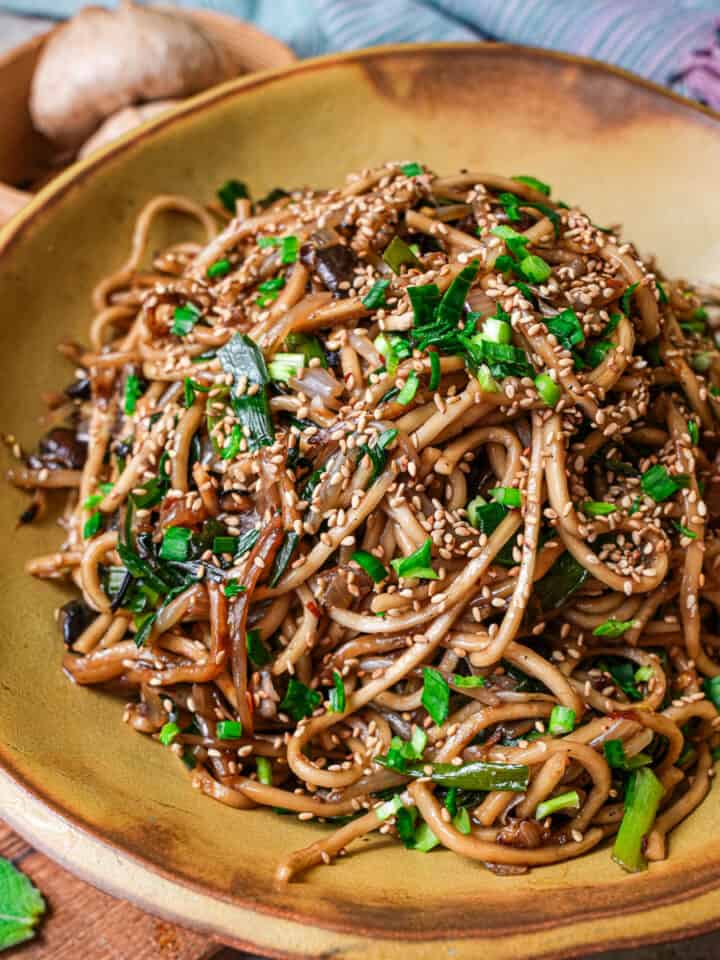
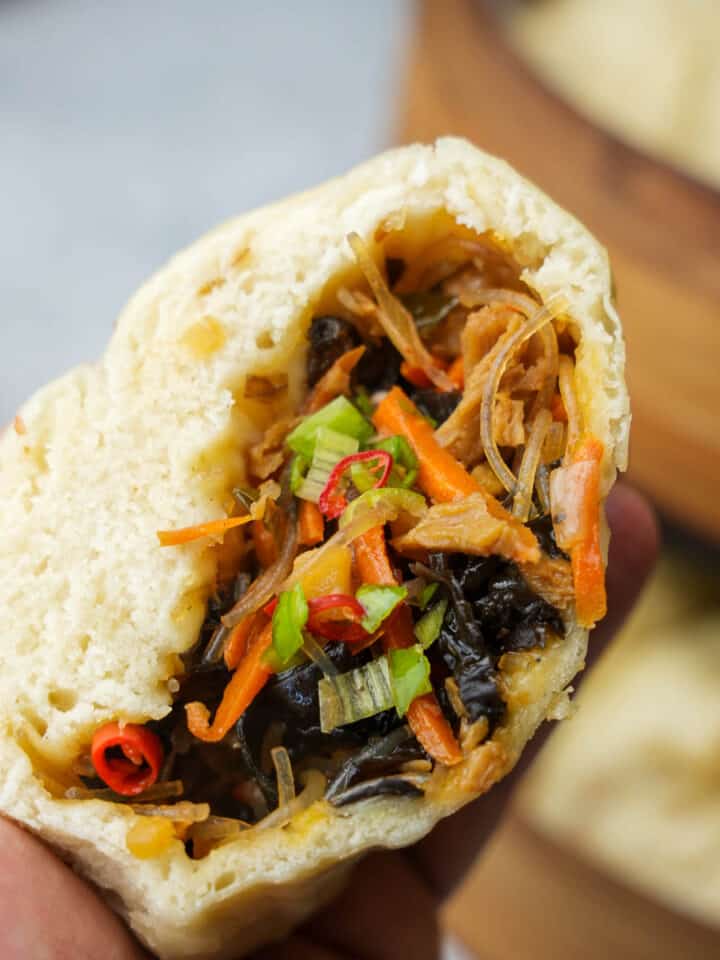
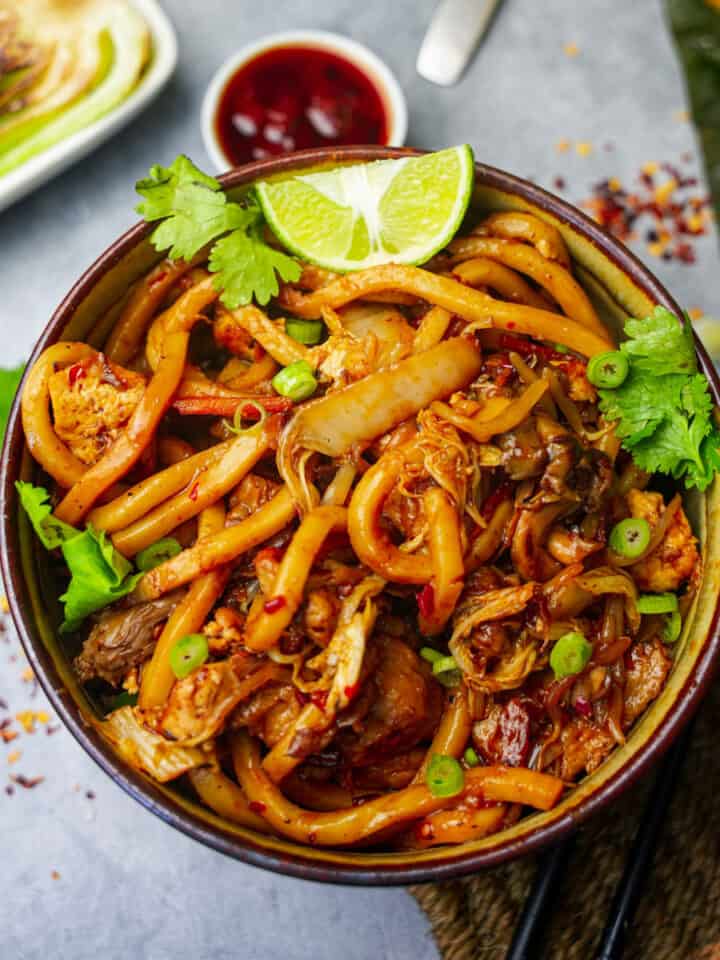
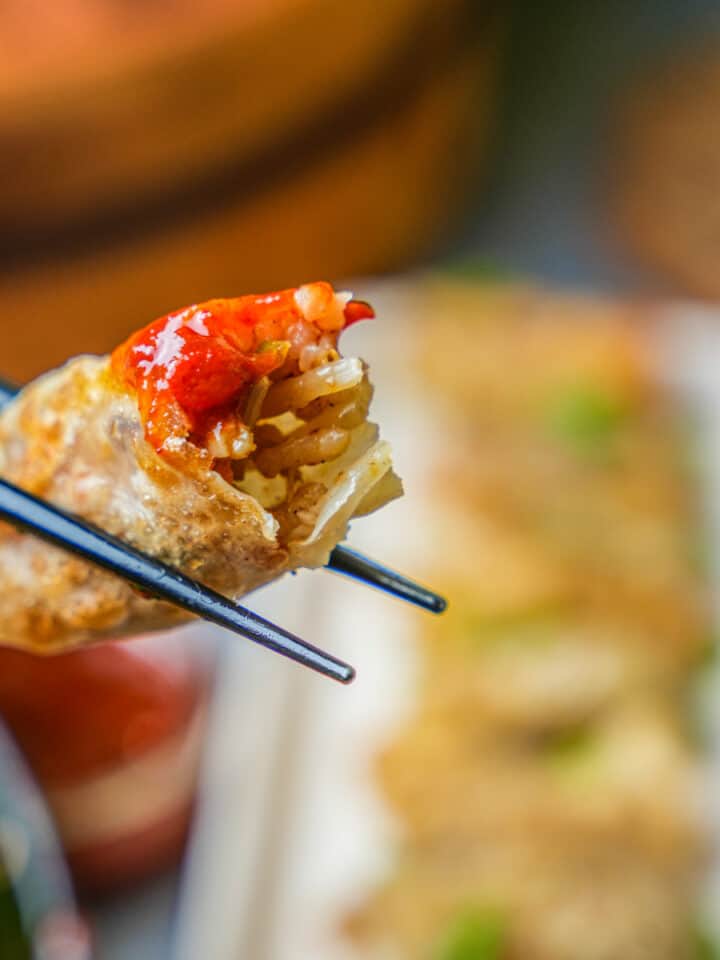




Cheryl says
Super tasty , lots of flavor and textures! The parchment paper hack works like a charm.